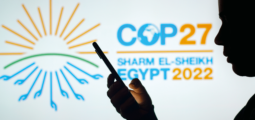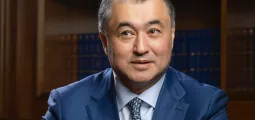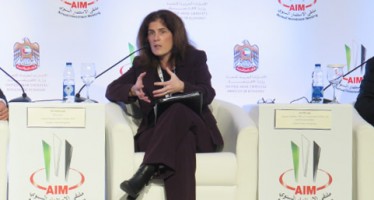ISID, McGill University: Updating the DFIs’ Operating Models to Achieve the UN 2030 SDG Agenda

Montreal, Canada: the downtown Montreal campus of McGill University
The UN General Assembly set the Sustainable Development Goals (SDGs) five years ago. The estimated annual amount of investment needed to achieve them is short — by $2.5tn to $3tn.
The stakeholders that play a key role in directing and mobilising capital to finance the goals have not done enough.
In relation to actions taken by countries towards domestic resource mobilisation for addressing the SDGs, 79 of the 107 national development plans analysed by the UN lack an investment strategy. Countries need to create development plans that are prioritised in their budgets, and that are solidly integrated in their national financing frameworks. This is also necessary to attract capital.
Since total flows of net Official Development Assistance (ODA) in 2018 amounted to “just” $150bn, there are hopes that international financial institutions as well as private capital markets will be mobilised to help address the financial shortfall. However, the international financial system has not taken enough action.
Despite some welcome initiatives, the financial markets continue to operate mostly under short-term commercial goals, taking a conservative approach towards investing in developing countries. Prudential reg
ulations imposed on commercial banks following the 2008 financial crisis made lending to developmental areas like SMEs and infrastructure more stringent. Development finance institutions (DFIs) have a crucial role to play here.
DFIs currently still mobilise low volumes of private capital, especially their “private-sector windows” (PSWs). The provision of guarantees remains low, and the use of financial instruments and structures that have the capacity to result in high financial additionality is minimum. The DFIs’ PSWs investments in the more challenging countries, sectors and segments of the population are disproportionately low. Their investment capacities are overall not maximised as a result of prudent use of capital, limited use of the wide range of financial products that exist in the mainstream financial market, and operating inefficiencies.
DFIs, especially their PSWs, are vital stakeholders in directing and mobilising capital to achieve the 2030 Agenda. Below we expand on these matters and present our recommendations in the following three areas:
- Mobilisation of private capital
- Offering of financial products and structures with high financial additionality
- Maximisation of investment potential
Mobilisation of Private Capital
Based on an analysis of the eight largest MDBs’ PSWs, their direct and indirect mobilisation in 2016 represented $1.5 of private capital for every $1 invested from their own accounts. Direct mobilisation represented $0.40 of private capital for every $1 invested from their own accounts. While these ratios apparently increased in recent years, they remain very low, and must grow by to help address the financing shortfall.
Mobilisation ratios can increase as a result of adapted efforts from dedicated teams, and by using an increased number of mobilisation structures. It is necessary that projects have market terms (including regarding financial returns and tenor), and that they are structured according to market best-practice, or the possible mobilisation volumes are limited and distort the markets
We recommend that the DFIs’ PSWs make use of the broader mobilisation structures that exist in the market. The mainstream financial sector has been using securitisations, credit-linked-notes (CLNs), collateral loan obligations (CLOs), tailor-structured funds and many by-products of these, which may also be used by DFIs for mobilisation purposes.
We also recommend that the DFIs’ PSWs increase their interactions with private capital sources by sharing their investment knowledge and by proposing structures that address their interests and risk tolerance levels.
Offering of Financial Products and Structures with High Financial Additionality
The DFIs’ PSWs have mostly used loans as their primary financial product, and have dedicated limited structuring efforts towards maximising potential. Variable payment obligations and tailored subordinated loans — loan products with high financial additionality — are almost non-existent in DFIs’ portfolios. Guarantees represent a very small portion of the DFIs’ portfolios, with most being low-risk, short-term, and related to trade financing. Guarantees represent a mainstream financial product that possesses a relevant capacity to unlock markets.
We recommend that the DFIs’ PSWs provide a wider variety of financial products, structured for the specific cases when so may result in higher financial additionality.
Maximisation of Investment Potential
DFIs have disproportionately invested in upper- and lower-middle-income countries as compared to low-income countries. Most DFIs present portfolio concentration on a few countries, including high-income ones. In the SDG priority sectors of education, health and energy, DFIs are underserving large segments of the poorest populations. Direct investments in SMEs and infrastructure, which are areas that are fundamental for economic development in developing countries, have also been relatively low.
We believe that the largest limitations to the DFIs’ investment potential result from their current operating models.
In this regard, we recommend making use of the wider range of financial products that exist in the mainstream financial market (and applying dedicated structuring) to finance projects in countries and/or sectors and segments where the risk level is deemed higher.
Internal inefficiencies, namely by: increasing delegation to management while strengthening board oversight of management functioning and deliverables, must be improved by applying the best-practice in commercial and investment banking, diminishing any focus on delivering volumes, incorporating additional specialised personnel from the mainstream financial sector, and adjusting management decision-making process and institutional culture.
We also believe that there is room to increase the utilisation of DFIs’ capital by maximising their balance sheets with tools commonly used by commercial banks, such as securitisations, insurances, and creation of separate investment funds. Risk-diversification must also be increased.
Towards the 2030 Agenda
Collaboration between DFIs and private investors, as well as among DFIs, must improve significantly. In this regard, we suggest maximising the use of DFIs’ donor-funded innovation windows and concessional funding windows that focus on least-developed countries and/or underserved sectors and segments of the population. Testing investments can pave the way for private capital. Such windows house professionals with track records in leading innovation in development financing.
DFIs’ actions should be harmonised to avoid duplication. This would involve minimising duplicated due-diligence efforts, as well as business origination and investment structuring.
DFIs-private capital funds should be launched, along with public-private development finance institutions. DFIs must share their own investment financial capacities, including capital.
We believe that the implementation of these points would contribute to achieving the 2030 Agenda. Accomplishing the SDGs is not only dependent on the adaptation of DFIs, but also on complementary effective actions from countries, the international financial system and the private sector, in addition to collaboration among all stakeholders.
About the Authors
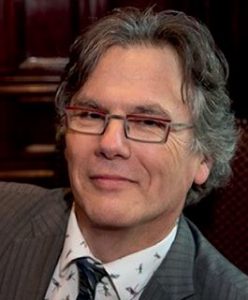
Author: Franque Grimard
Franque Grimard is an Associate Professor of the Department of Economics at McGill University. His research specialties are Development and Health Economics, where he is interested in the application of statistical analysis and data collection to applied policy issues such as poverty and social protection, health, gender empowerment, public finance management, corporate social responsibility and extractive industries, and sustainable development. His work on economic development has been published in the Journal of Development Economics, World Development, Economic Development and Cultural Change, the Review of Development Economics and Ecological Economics. Professor Grimard is also the president of the Canadian Development Economics Study Group (CDESG). Operating with an IDRC grant, CDESG is the main research group on development economics in Canada organizing policy panels in the area of development economics, sponsoring developing country scholars to come to CDESG conferences to present their work, building a community of researchers in Canada and abroad to produce research and applied policy in development economics for policy makers in Canada and in developing countries.
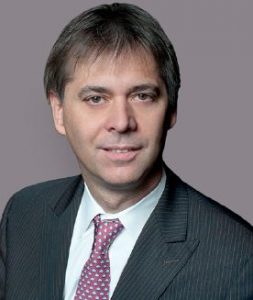
Author: Christian Novak
Christian Novak is a Professor of Practice at McGill University – Institute for the Study of International Development (ISID), where his works focus on development financing. Christian is also Managing Partner of FMA – Frontier Markets Advisors, a Canadian firm that provides advisory services to organizations involved in development financing and impact investing. His previous experience includes senior emerging markets and global responsibilities in investment banks and in a leading regional development financial institution, in the areas of risk management and debt capital markets.
About About McGill University’s Institute for the Study of International Development (ISID)
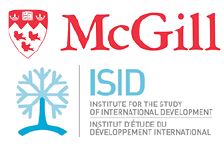
ISID’s mission is to advance knowledge of the social, political, economic and environmental processes and conditions that enable people and societies to develop their full potential, living long, healthy, meaningful, and productive lives in community with others. The Institute supports critical cutting-edge research through fostering the engagement and collaboration of a multidisciplinary team of faculty, practitioners, and students. ISID’s academic programs aim to train a new generation of passionate and innovative future leaders in the skills they need to conduct rigorous, normative and evidence-based analysis of the concepts, policies, and practices of international development. Through extensive outreach programs that aim to build bridges between academic researchers, international development policymakers and practitioners, and affected communities, ISID strives to create and communicate knowledge that contributes to understanding and solving real world development challenges. Website: mcgill.ca/isid
You may have an interest in also reading…
Evan Harvey, Nasdaq: ESG Reporting – Six Reasons Why
The corporate reporting of sustainability data – call it ESG, or environmental, social, and governance data – has come a
World Bank Group’s PREM: Harnessing Trade Opportunities for Growth and Development
The pace of global trade integration over the past two decades has been extraordinary. Trade has been a key driver
New Business-Registration Portal Goes Global
A new web portal has been launched to help companies directly access, and assess the user-friendliness of, business registration websites




































































